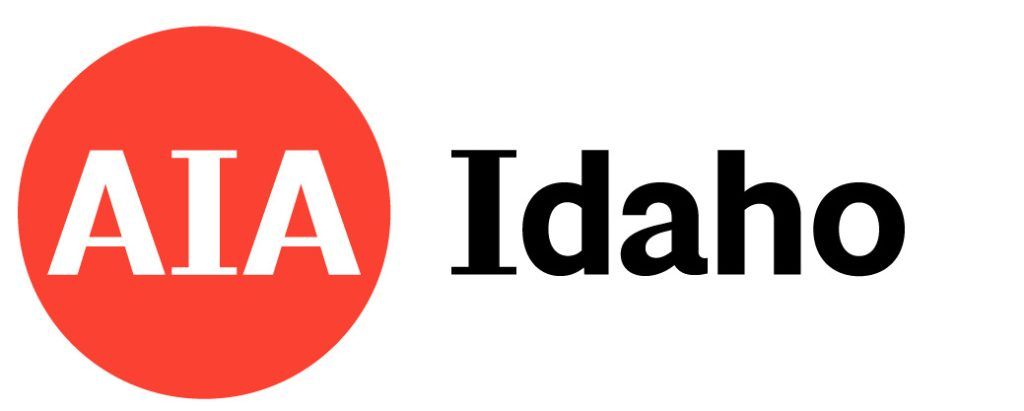The Qualification Based Selection (QBS) has been a part of the professional services industry in Idaho for over 25 years (enacted into law in 1998). Influenced by the federal government’s 1972 adoption of a similar process for federally funded projects, QBS is what state and federal agencies seeking architecture, engineering, landscape architecture, construction management and professional land surveying services are required to follow. And they should be.
In our industry, we understand and support the necessity of this law. As licensed professionals, we hold a great responsibility to ensure the health, safety and welfare of building occupants. As an architect focused on designing high-quality, long-lasting public facilities that accommodate thousands of people every year — schools, hospitals, civic buildings, justice complexes, public safety buildings, etc. — I hold QBS in the highest regard. I believe in its value, as do my colleagues across the industry. Our specific qualifications for each project should be thoughtfully reviewed and considered. It has an enormous impact on occupants’ safety and well-being.
It goes without saying that we would not want a foot doctor operating on our brains. The same principle applies to our industry. The potential for catastrophic, harmful situations is high if our community’s facilities are not designed by specifically qualified professionals.
In the “old days,” professionals were often selected based on relationships and cost. In most cases today, following the development of QBS, qualified professionals are selected based on their unique expertise and experience.
Though most of us AEC folks are familiar with QBS, some of us may not fully understand its process. Here is a quick summary of the steps a public agency implementing it must adhere to:
- Provide a general description of the services being solicited.
- Publish a Request for Qualifications (RFQ) to the public, including the criteria and procedures to be used for measurable scoring, ranking and selection.
- Using predetermined criteria, score and rank the RFQ responses based on unique qualifications and demonstrated competence of responding firm or individual.
- Select the person or firm deemed to be the highest ranked and most qualified.
- Negotiate a contract with the selected firm or individual at a price determined by the public agency to be reasonable and fair. If unable to reach a satisfactory contract agreement with the highest-ranked firm, negotiation can then proceed with the next highest-ranked firm.
A critical success factor in the QBS process is making sure there is a diverse group to help evaluate the responses. These evaluators must bring zero conflicts of interest to the table. They must participate in the process without bias or agendas. In most cases, members of the evaluation/selection committee work for the owner/agency facilitating the project and have an informed sense of the scope and goals. These evaluators are often joined by a neutral “outsider” or someone less familiar with the project who can provide a fresh perspective and another level of critique and evaluation. Whether it’s to make a selection for one project or a series of projects over a set number of years, the evaluation committee must remain committed to the QBS process to ensure not only fairness but the selection of the most qualified professional.
Though some project owners/agencies still attempt to bypass Idaho’s adopted QBS process, it’s in their best interest to follow it. QBS makes sense for both state and non-state projects when trying to select the most qualified firm or individual.
QBS Cuts Cost
In 2022, the American Council of Engineering Companies (ACEC) Research Institute conducted a study to quantify the potential benefits of using the QBS process. The study concluded that there are significant benefits, including saving state agencies money by outperforming the national average in keeping projects on budget. The analyzed QBS projects in this study showed an overall project cost growth of just 3%, which is half the national average. For example, the state of Idaho has budgeted nearly $256 million in construction projects for 2024, and using the QBS process could save them upwards of $7.6 million.
QBS Saves Time
In addition to saving money, it has been proven that the QBS process also saves time on projects. The QBS procurement process outperforms the national average in keeping projects on schedule. According to the ACEC Research Institute, 32% of non-QBS projects met all construction milestones, while over 48% of QBS projects met all construction schedules. With construction costs escalating to all-time highs, schedules are critical to saving money. This not only leads to cost savings for the agency but also reduces delays and improves the likelihood of owner satisfaction with the project.
QBS Improves Quality and Encourages Innovation
Complex projects often require a unique understanding that only the most qualified professionals possess, as they have dedicated hundreds of hours to their specific areas of expertise. Less qualified and experienced firms typically struggle with balancing these complicated issues. Furthermore, complicated and complex projects often require innovative solutions that clients may not be aware of, which can only be provided by experienced and educated firms dedicated to specific expertise.
So, yes, QBS is an important process and good for Idahoans. And it can also be daunting to manage. There is help. QBS of Idaho can help facilitate the process and develop qualifications to ensure projects meet state law requirements. They are available as a free service to entities and professionals, offering RFQ assistance, setting appropriate criteria, reviewing proposals, participating in selection panels and providing QBS training for staff and elected officials. If there are concerns that a potential project is not following the QBS process, anonymous questions can be submitted to the QBS council, for which they will follow up with the project representative.
Final Thoughts
The QBS process ensures a thoughtful and deliberate selection that is based on qualifications, expertise and competence. It ensures that Idaho’s public buildings are created with high quality, longevity and user safety and well-being in mind. It is wise to use it for any project.
Jared Schmidt has been a dedicated professional in our region’s architecture industry for over 17 years. Currently, he is a senior architect at Lombard/Conrad Architects. He earned his architectural degree from Washington State University (Go Cougs!), then quickly jumped into his career. What has kept Jared focused all these years is a deep-rooted interest in designing healthcare and education spaces. On a broader note, he’s motivated by being involved in projects that have a great impact on communities. If the task is to create a facility that inspires young minds to embrace learning, Jared’s all in. If it’s a new healthcare environment that empowers practitioners and caregivers to better help those in need of healing, he steps up to lead.
Beyond his job, Jared is committed to moving our industry forward. He has served as president of AIA Central Idaho and continues to be a part of several committees within AIA. He has a desire to showcase the strengths and talents of his peers, as well as improve the career paths for up-and-coming professionals. His community engagement doesn’t end there. Jared is currently serving on the board of QBS (Quality-Based Selection) of Idaho and has dedicated countless hours over the years as an appointed Guardian Ad Litem, advocating for abused, neglected and abandoned children in Idaho.
Outside of work, Jared enjoys making new memories with his wife and two children in the mountains of Idaho. Whether it is backpacking through the Sawtooths, camping, mountain biking or skiing at the local hill, he enjoys experiencing all of Idaho with his family.








